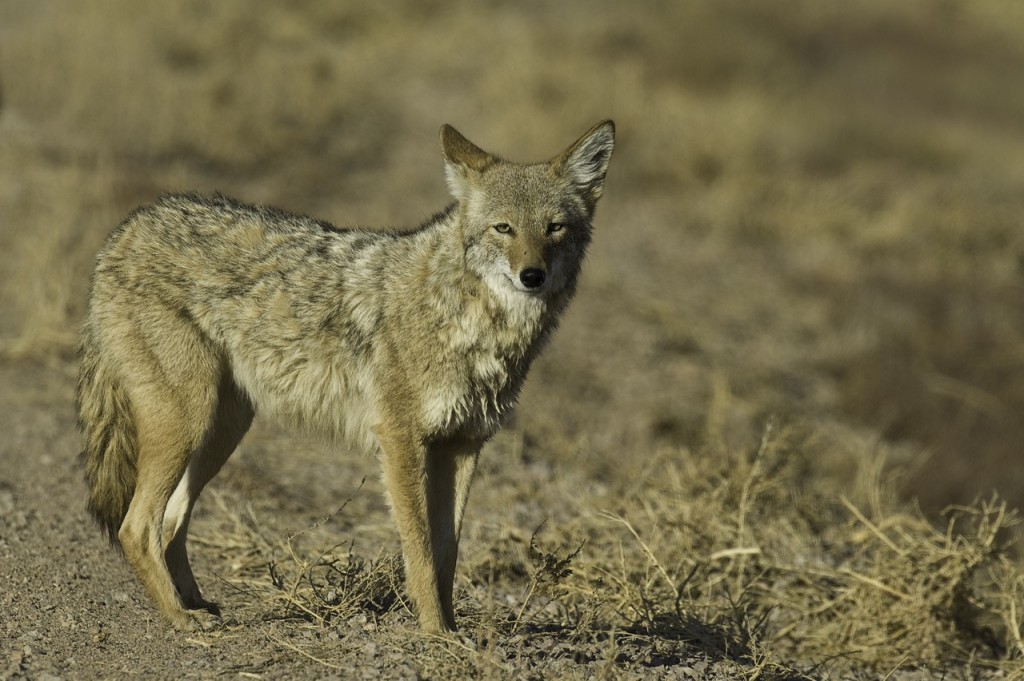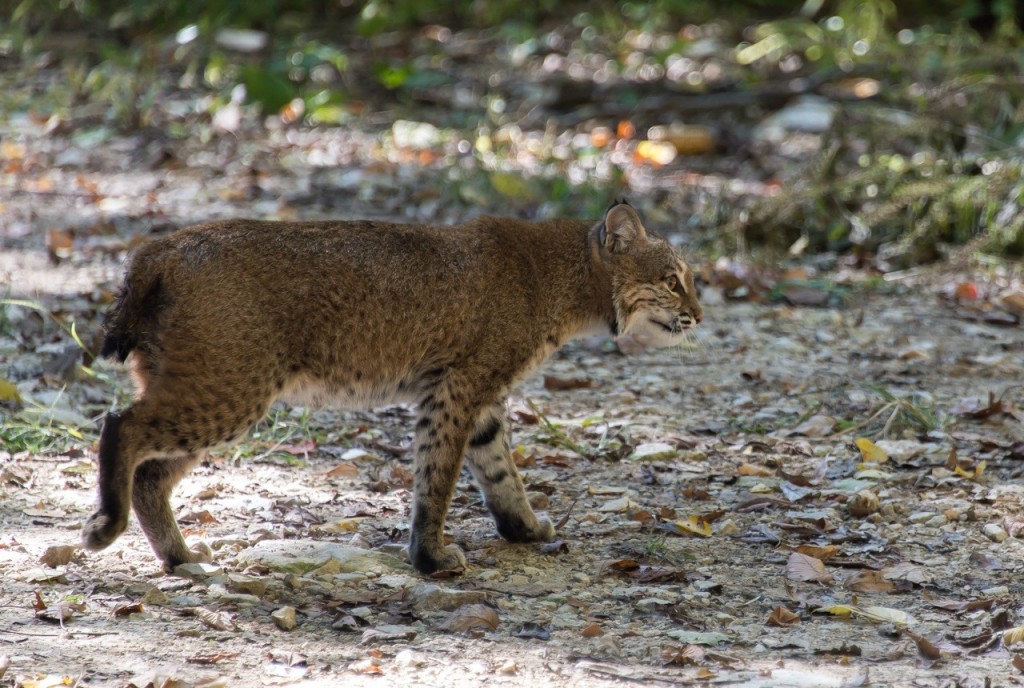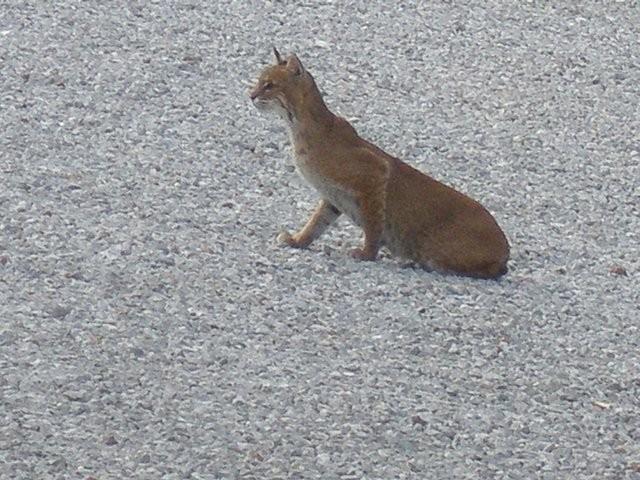Predators — Keep Nature in Balance
Our carnivore neighbors always get our attention. The status and distribution of big cats, yelping coyotes and furtive foxes in our bluff lands capture our imagination.
And, these top-level land predators long-captured the imaginations of Native American peoples, figuring in origin stories, folklore and tales. Perhaps only rivaled by the raven, coyote most often appeared as a trickster, full of cunning and guile. But coyote also appeared to be regularly fooled by the fox, who was characterized as even more nimble-witted. In one such legend, fox repeatedly talks coyote out his intention to kill and eat the small creature by promising coyote a better reward. Each time coyote realizes that fox has fooled him and escaped again and, each time coyote vows again to catch, kill and eat the clever fox. In their final encounter, coyote prepares to pounce on the fox at the edge of lake. But the fox begs for coyote’s help to retrieve a large round cheese that he had stolen but unfortunately dropped into the lake. The fox drew coyote’s attention to the reflection of the great, round moon in the lake and promised coyote the largest share of the “cheese.” “But it’s too deep for me, I won’t be able to dive down far enough,” gullible coyote protested. Fox replied, “Let me tie these stones around your neck and then you’ll be able to get deep enough to get the cheese.” And, so, coyote agreed and stretched out his neck and held up his jaw enabling fox to easily tie on the weights. Coyote waded into the water and, as he disappeared, clever fox trotted away.
Perhaps because coyotes were seen as foolish they were not included as among the great spirits by Native American peoples. A Shoshone legend tells of a council called by the great spirits cougar, bobcat, wolf and fox. The spirits promise to help the Shoshone who were beset by a fierce warrior group and, indeed, defeat and banish the enemies. The spirit animals asked for and received a pledge from the Shoshone that they would never hunt cougars, bobcats, wolves or foxes for their great spirits were protective of the people.
Europeans brought a rather different view of these animals as Kerry Temple wrote in Wood Ghost, a 1996 article in Notre Dame Magazine:
“Americans have never really known what to do with the wild animals that flourished here before the European onslaught. Some were taken for their meat, some for their pelts, and others — like the wolf, the bear and the wild cats — were killed like outlaws. They were a nuisance; they threatened the safety of those carving a civilization out of the great American wilderness. But, as was the case with the native peoples who were also in the way of westward expansion, their populations were more severely decimated by a reduction in habitat. …In 1915 a government Predator and Control Agency was created within the U.S. Department of Agriculture. Over the next several decades literally thousands of bobcats, wolves and mountain lions were killed through a carefully orchestrated poisoning program. It was not until 1972, when President Nixon prohibited the use of toxic chemicals on federal lands, that societal forces slowed the wholesale slaughter of American wildlife. By then at least half a million bobcats had been killed.”
Bobcats were common and widespread in Illinois when the first European settlers arrived. Habitat changes and unregulated harvest caused their numbers to decline dramatically by the late 1800s. Bobcats were placed on the state’s first list of threatened species in December 1977. During the early 1990s bobcat populations began to rebound, particularly in the Shawnee Forest and in forested counties along the Mississippi, Kaskaskia and Illinois Rivers. As a result, bobcats were removed from the list of state threatened species in 1999.
Bobcats are now thriving in southern and southwestern Illinois. They are frequently sighted in the bluff lands of Monroe, Randolph and St. Clair Counties. A study by Southern Illinois University – Carbondale estimated that about 2,200 bobcats existed south of Interstate 64 in 2000; by 2009, their estimated numbers had grown to over 3,200.
Cougar populations are now expanding from the West into the prairie states and Midwest. Two new breeding populations have become established in the last few years: one in the Badlands of western North Dakota and one more recently in the Pine Ridge area of western Nebraska. In June, 2011 one of the longest distance journeys of a land animal was recorded by DNA analysis of a cougar that originated in the Black Hills of South Dakota, was confirmed in Minnesota, Wisconsin and then later in upstate New York and then Connecticut where it was killed by a vehicle 70 miles from New York City.
Rumors and sightings of cougars are ever-increasing in our area; and yet, rigorous scientific confirmation of truly wild cougars in the state only validates one in Randolph County in 2002, one in northwest Illinois in 2004, and, unbelievably, one in downtown Chicago in 2008. Missouri has had 8 scientifically documented sightings since 2011.
People have long been the coyote’s main enemy; in fact they no longer have any other natural predator in the state. Despite the fact that large numbers of coyotes are harvested in Illinois each year (125,000 in 2006), their numbers have consistently grown since the 1970s because of the explosion in the numbers of deer and the lack of natural predators.
Our fox numbers, however, are in steep decline. Both our red fox population, a creature of open country and open woodlots, and gray fox, which prefer deeper forest are crashing because of the proliferation of coyotes. Well-adapted to forest life, gray fox are known to climb trees and may leap into a tree and hide within the foliage to escape a predator.
Clifftop hosted a public seminar to help us better understand the status of these carnivores in our area. Dr. Clay Nielsen, Professor of Forest Wildlife, at Southern Illinois University-Carbondale’s Cooperative Wildlife Research Laboratory, and Director of Science for the non-profit Cougar Network organization, gave a presentation on Saturday, November 10th, 2012, from 1 to 3 PM, at the Monroe County Annex Building, 901 Illinois Avenue, in Waterloo. A video version of Dr. Nielsen’s presentation may be viewed on Clifftop’s YouTube page:
CLIFFTOP, a local nonprofit organization, is focused on preserving and protecting area bluff lands.
A version of this article appeared in the 19 October 2012 edition of the Monroe County Independent.
© 2012 all content rights reserved Clifftop NFP
Comments are currently closed.



